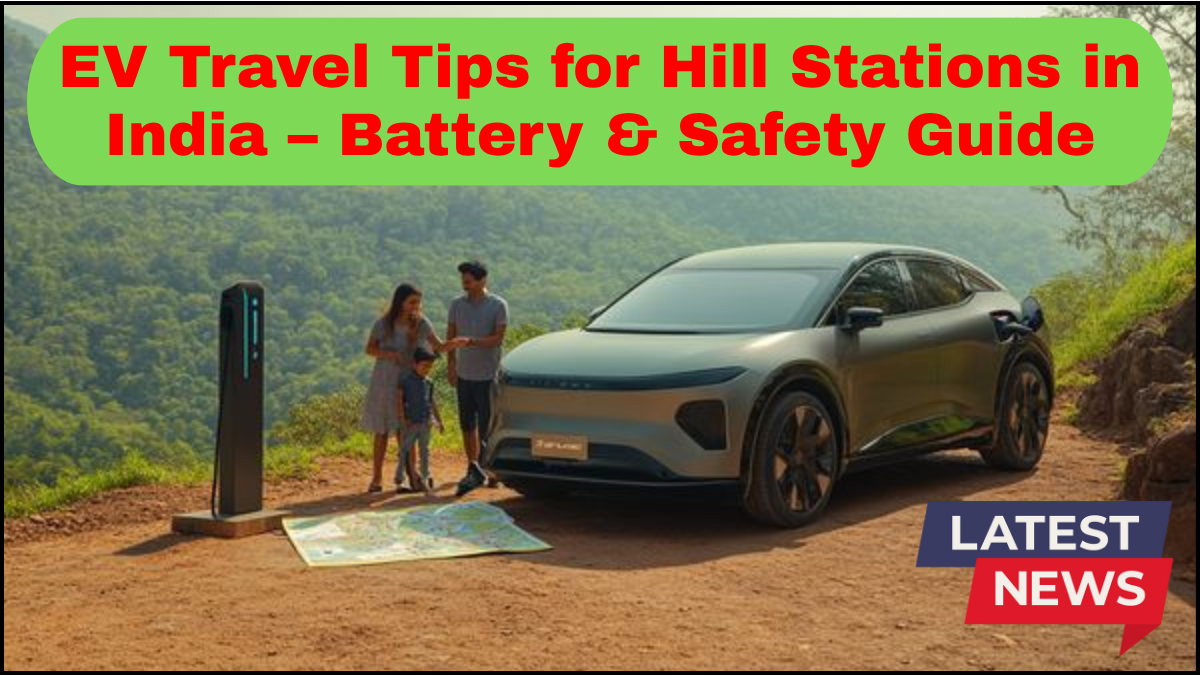Electric Vehicles (EVs) are gaining popularity in India, and many EV owners are now exploring hill stations for road trips. While these scenic routes offer fresh air and breathtaking views, they also pose unique challenges for EVs. From steep inclines to unpredictable weather, it’s essential to prepare well to ensure a smooth and safe journey. Here are essential hill station EV driving tips along with a battery and safety guide tailored for India’s mountainous terrain.

Understand Your EV’s Range in Hilly Terrain
EVs perform differently on hilly roads compared to flat highways. Steep climbs can put extra load on the battery, reducing range faster than expected.
- Plan conservatively: If your EV has a claimed range of 300 km, plan your journey assuming 200–250 km on hill routes.
- Use regenerative braking wisely: On downhill slopes, regenerative braking can help recharge your battery slightly and extend range. Use B-mode (brake mode) or similar features to gain this advantage.
Battery Tips for Cold Weather
Hill stations in India often have significantly lower temperatures, especially during mornings and nights. Cold weather can affect battery performance and charging efficiency.
- Precondition your EV: If your EV allows it, warm up the battery before starting your trip. Some EVs offer remote preconditioning through apps.
- Keep the battery charged: Avoid letting your battery drop below 20% in cold conditions. Lithium-ion batteries are sensitive to extreme cold and may degrade faster if frequently discharged.
- Park smart: Park in enclosed or warmer areas if possible. Avoid leaving your EV in open, freezing conditions overnight.
Map Charging Stations in Advance
Unlike cities, hill stations and remote areas have fewer public EV charging points.
- Use apps like PlugShare, Tata Power EZ Charge, and Statiq to locate chargers along your route.
- Carry a portable charger and check whether your accommodation allows slow charging overnight.
- Talk to local hotels in advance to confirm charging options, especially in lesser-known destinations.
Driving Tips for Hill Roads
Driving in the hills requires a different set of skills and attention.
- Use lower gears or appropriate drive modes: Many EVs come with eco, normal, and sport modes. Use eco mode for better control and efficiency on climbs.
- Avoid over-acceleration: Smooth and steady driving helps conserve battery and enhances control on curves and slopes.
- Maintain a safe distance: Downhill drives need extra braking time. Keep more distance than usual.
- Watch the weather: Fog, snow, or rain can reduce traction. Ensure your tyres are in good condition and properly inflated.
Essential Safety Checks Before Your Trip
Safety should never be compromised when heading into the hills.
- Inspect tyres: Ensure they have enough tread and are properly inflated for hilly terrain.
- Test brakes and suspension: These components are crucial on steep and winding roads.
- Pack an emergency kit: Include a first aid box, flashlight, tow rope, portable tyre inflator, and extra power bank for mobile devices.
- Download offline maps: Mobile networks can be unreliable in remote areas.
Extra Hill Station EV Driving Tips
- Avoid full battery at the top: When descending, a full battery won’t allow regenerative braking to work efficiently. Try to keep it under 90% before going downhill.
- Monitor battery temperature: Many EVs display battery temperature. Avoid driving hard if it’s too cold or too hot.
- Drive during the day: Visibility and support options are better during daytime in remote hill areas.
FAQs: EV Travel in Indian Hill Stations
Q1: Can I drive my EV to high-altitude places like Manali or Nainital?
Yes, most modern EVs can handle high-altitude routes, but planning is key. Ensure your route includes charging points, and be aware that battery consumption may be higher.
Q2: How does cold weather impact EV battery life?
Cold weather reduces battery efficiency and charging speed. It may also limit regenerative braking. Keeping the battery warm and charged can help mitigate this.
Q3: Are portable EV chargers reliable for hill stations?
Portable chargers are useful but slow. They are best used overnight at hotels or homestays that allow access to a power socket.
Q4: What should I do if I run out of charge in a remote area?
Always keep emergency contacts handy. Some automakers offer roadside assistance. Planning ahead and carrying a backup plan is crucial.
Q5: Do EVs handle steep slopes well?
Yes, thanks to instant torque, EVs perform well on inclines. However, battery drain increases, so efficient driving is essential.
click here to learn more